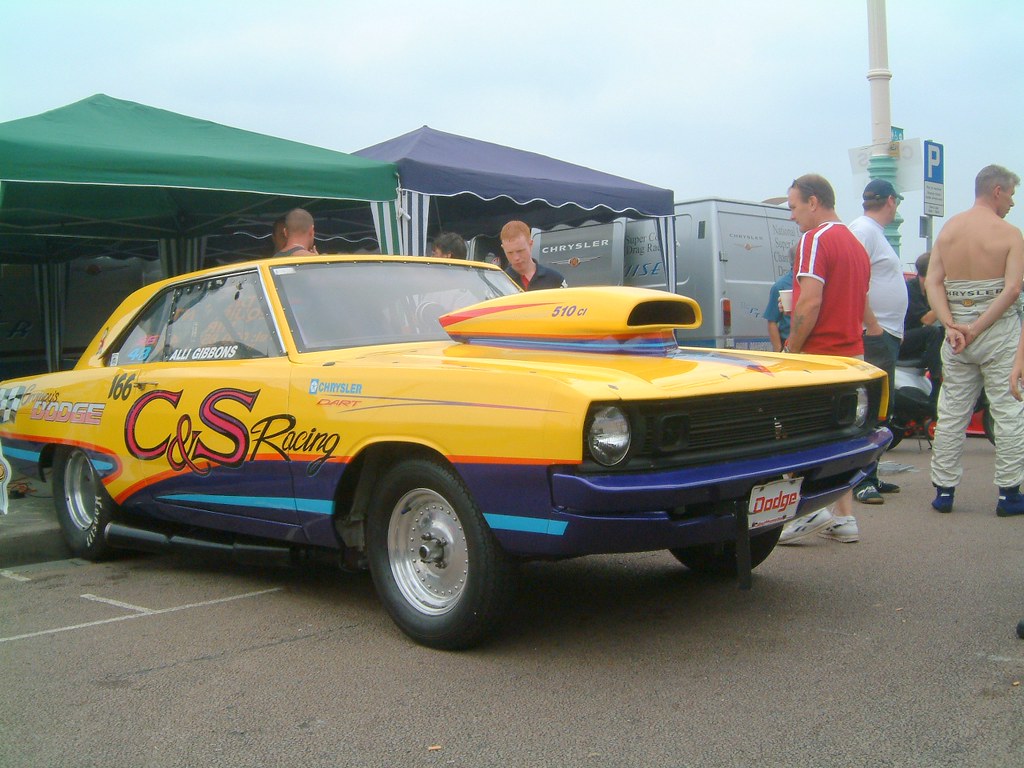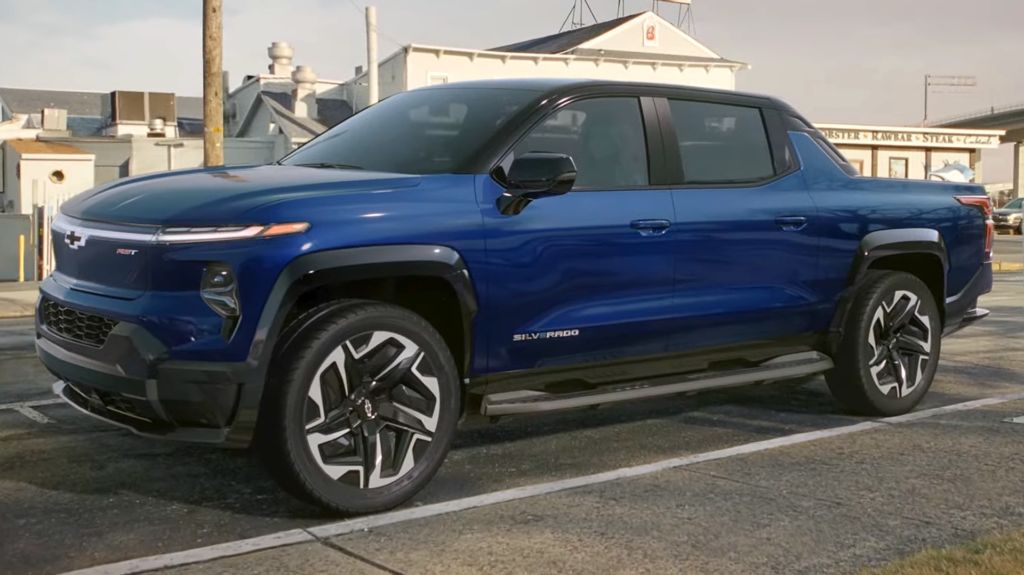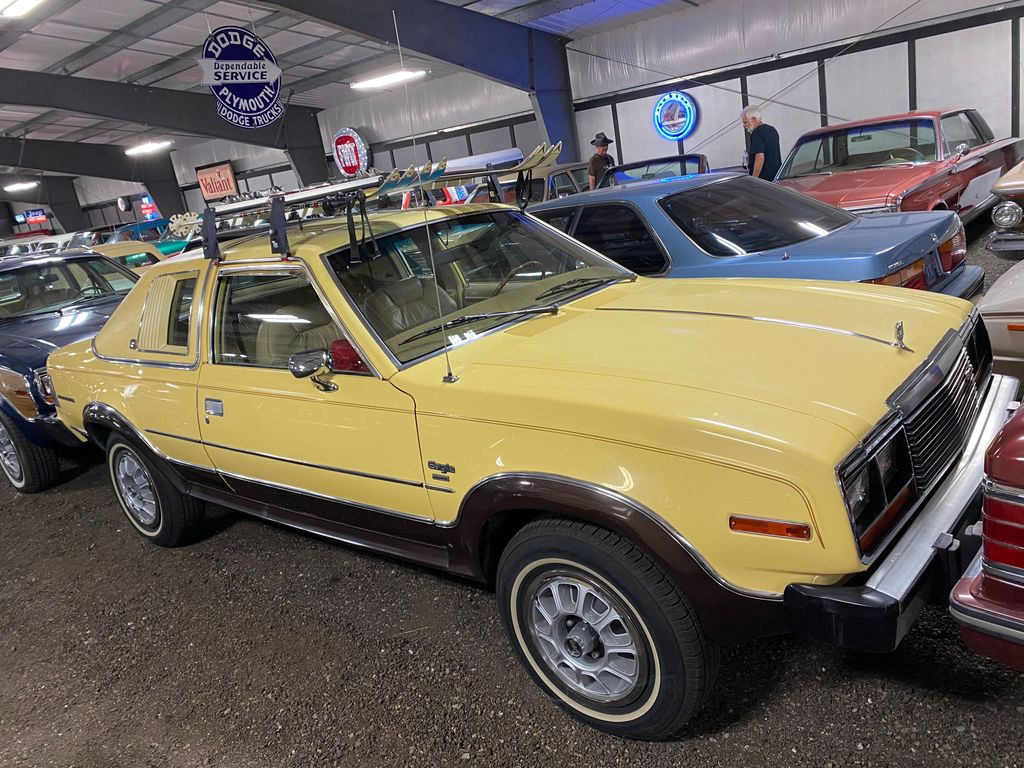
Welcome to the ’80s! While you might instantly think of big hair, shoulder pads, and neon lights, this decade was also a real turning point for cars. The ’70s, let’s be honest, weren’t exactly a golden era for automotive excitement; performance often took a backseat due to new environmental and safety regulations. American car manufacturers, in particular, found themselves struggling to produce anything that was truly cool or fast.
But as the calendar flipped to a new decade, car companies worldwide decided it was time for a major glow-up. They started pushing out fresh, interesting designs and daring new concepts, all in an effort to reignite buyer enthusiasm. Sure, you probably remember the iconic models of the ’80s—the ones that still turn heads and dominate classic car shows today. Those are the legends everyone talks about.
However, this isn’t about those well-known machines. Oh no, we’re diving deep into the archives for a real trip down memory lane! We’re talking about the models that didn’t quite stick, the ones that time forgot, the obscure rides you’ll rarely, if ever, catch cruising down the road anymore. So buckle up, because we’re about to rediscover 14 totally awesome, but often overlooked, classic cars from the 1980s that deserve another moment in the spotlight!
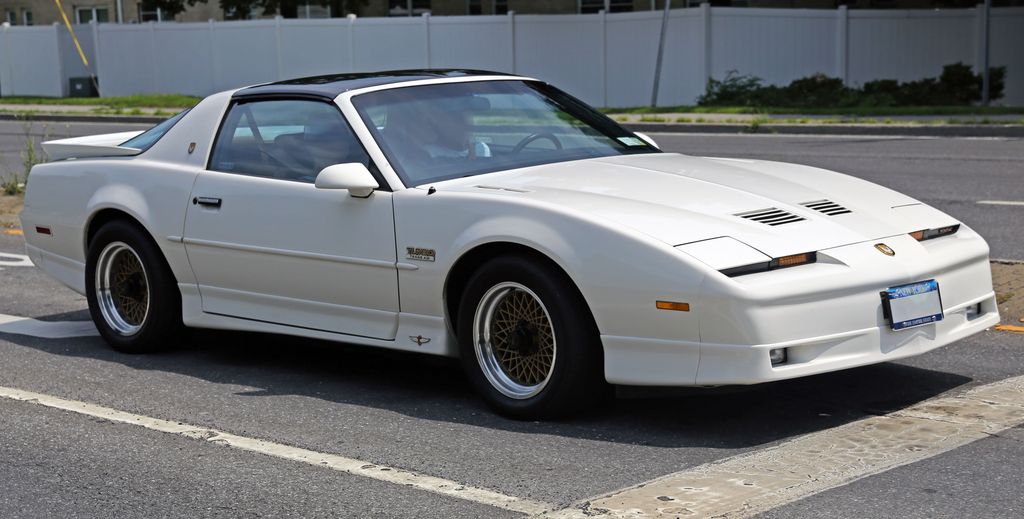
1. **Pontiac Trans Am GTA**Kicking things off, we’ve got the Pontiac Trans Am GTA, a true gem that most car fans considered the crème de la crème of the third-generation Pontiac F-body. This powerhouse burst onto the scene in 1987, flexing its muscles as the top-of-the-range Firebird offering. This beast of a package was available until the 1992 model year, and here’s the kicker: it was produced in relatively limited numbers, making it a bit of a rare bird even in its heyday.
What truly made the GTA so special? Well, it had two undeniable secret weapons up its sleeve: its formidable engine and the legendary WS6 handling package. The engine itself was a robust 350 V8, churning out a respectable 210 HP in its early models and soaring to an impressive 245 HP in later versions. There was even a juicy rumor circulating that this engine was identical to the one found in the mighty Corvette, given its shared TPI fuel injection system and displacement.
Sadly, that rumor wasn’t quite true; the Corvette famously rocked aluminum heads while Pontiac stuck with iron cast ones. But don’t let that distinction fool you! The power and performance figures were surprisingly similar, delivering a thrilling driving experience. And let’s not forget the WS6 package – it offered unmatched road holding and braking capabilities, thanks to its four disc brakes, a stiffer suspension, stronger sway bars, special wheels, and performance tires. This car was truly built to handle the open road!
Car Model Information: 2024 Genesis GV70 2.5T AWD
Name: Pontiac Firebird
Caption: The second, third, and fourth generations of,the Pontiac Firebird Trans Am
Manufacturer: Pontiac (automobile)
Production: February 23, 1967 – August 30, 2002
ModelYears: 1967 – 2002
Class: Pony car,Muscle car
Platform: GM F platform
Related: Chevrolet Camaro
Layout: Front engine, rear-wheel-drive layout
Categories: 1970s cars, 1980s cars, 1990s cars, 2000s cars, All articles with dead external links
Summary: The Pontiac Firebird is an American automobile built and produced by Pontiac from the 1967 to 2002 model years. Designed as a pony car to compete with the Ford Mustang, it was introduced on February 23, 1967, five months after GM’s Chevrolet division’s platform-sharing Camaro. This also coincided with the release of the 1967 Mercury Cougar, Ford’s upscale, platform-sharing version of the Mustang.
The name “Firebird” was also previously used by GM for the General Motors Firebird series of concept cars in the 1950s.
Get more information about: Pontiac Firebird
Buying a high-performing used car >>>
Brand: Pontiac Model: Trans Am GTA
Price: $39,995 Mileage: 20,074 mi.
Read more about: Gearhead Gold: Unearthing the 14 Most Underrated Muscle Cars Ever Built
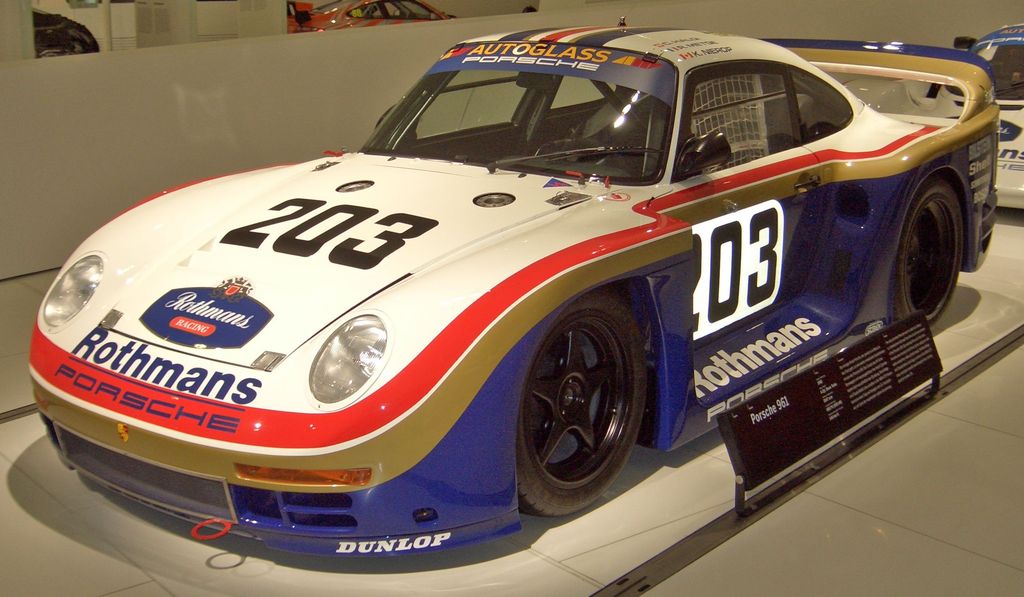
2. **Porsche 961**When you think Porsche icons, the 959 probably springs to mind almost instantly, right? It’s a legendary car with multiple groundbreaking variants, including the record-breaking road car and the legendary 959 Paris-Dakar rally champion. But lurking in its shadow, a lesser-known, one-off car also emerged from the cutting-edge 959 program: the Porsche 961. This was, in essence, a race-ready 959, tweaked and honed for even better performance on the track.
The brilliant engineers developed a revised engine specifically for the 961, capable of producing a whopping 680 horsepower in its most powerful configuration. Talk about a powerhouse that could dominate! Its advanced four-wheel drive system was also meticulously re-engineered, making the 961 handle remarkably more like a rear-drive car, which was quite a departure from its roadgoing counterpart. Every ounce of weight was painstakingly stripped away, and a new, wider bodyshell was crafted for optimal airflow and track dominance.
This racing marvel made its official debut at the 1986 24 Hours of Le Mans, making history as the very first four-wheel drive car to ever grace that grid. It even finished in a respectable seventh place, a testament to its raw ability! Porsche continued to race the 961 in various other endurance events throughout the following year, though with less impressive overall results. Its final race was the 1987 Le Mans, where it unfortunately caught fire after a collision with a barrier and suffered significant damage. Thankfully, the car was eventually restored by Porsche and now lives on display at the brand’s museum in Stuttgart, Germany, a truly forgotten hero of motorsport history.
Read more about: Classic Cars Worth a Fortune: See the Models Skyrocketed in Value
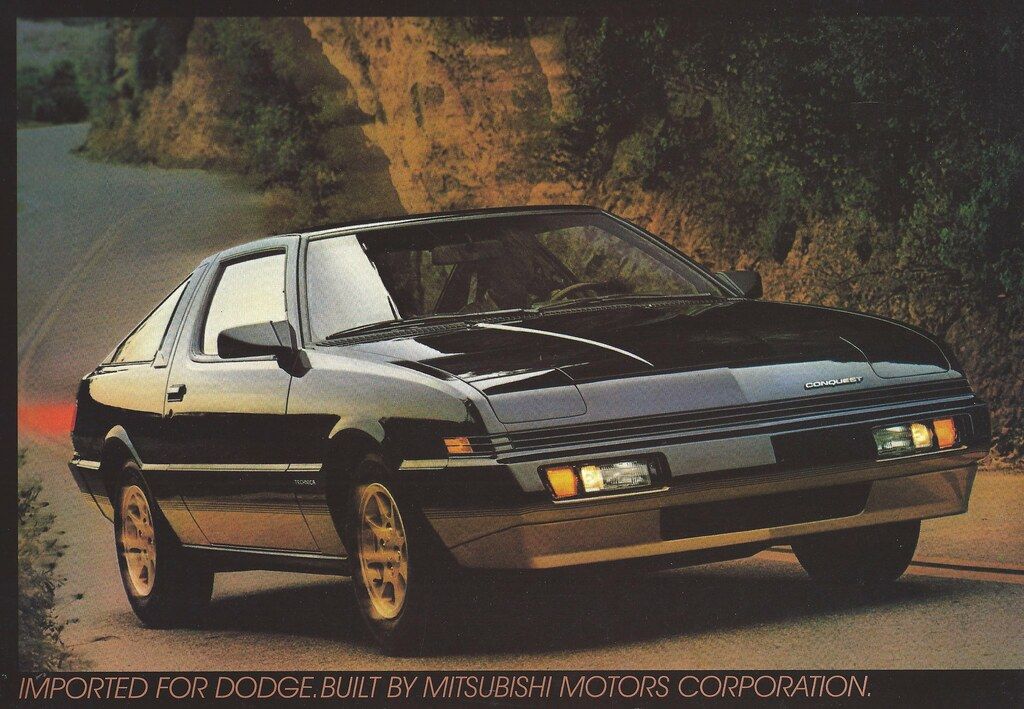
3. **Dodge Conquest/Mitsubishi Starion**Back in 1971, Chrysler made a strategic move by buying a stake in Mitsubishi, and over the following decade, the ties between the two companies gradually grew stronger. Fast forward to the early ’80s, and Mitsubishi was absolutely itching to create a car that could go head-to-head with the sporty offerings from rival Japanese manufacturers like Mazda, Toyota, and Nissan. And just like that, the Starion was born – a sleek new two-door coupe that promised both style and excitement.
This turbocharged, four-cylinder beauty came equipped with a smooth five-speed manual transmission and sported some seriously sharp styling that definitely turned heads. Chrysler immediately saw the immense potential in this fresh new design and began importing it into the U.S., though with a distinct American twist: they badge-engineered it under a variety of names, including the instantly recognizable Dodge and Plymouth Conquest. Production of this versatile car continued throughout the entire decade, eventually wrapping up in 1989.
Despite boasting impressive performance figures for its time and even luxurious touches like automatic climate control, the Starion/Conquest never quite managed to gain the same widespread following or iconic status as its fierce rivals, such as the Mazda RX-7 or Toyota Supra. While those cars carved out lasting legacies as stalwarts of the JDM (Japanese Domestic Market) scene, the Starion/Conquest simply slipped into a quiet obscurity. It’s a genuine shame, really, for such a capable and stylish machine to be so widely forgotten by enthusiasts today.

4. **Ferrari 408 4RM**Today, all-wheel drive systems are virtually everywhere, found in everything from blistering performance cars to practical, family-hauling crossovers. But rewind your mental VCR back to the early ’80s, and this cutting-edge technology was pretty much confined to rugged, off-road focused SUVs and dedicated rally cars. That’s precisely why what Ferrari’s brilliant engineers cooked up was truly radical: what about putting four-wheel drive in a supercar? Yes, you read that right – a four-wheel drive Ferrari!
The legendary designer Mauro Forghieri was put at the helm of this incredibly ambitious project, and by 1987, the very first prototype of the 408 4RM emerged from Ferrari’s top-secret development workshop. The resulting car ended up with somewhat awkward proportions, a necessary trade-off to accommodate the extra space and weight needed for the complex four-wheel drive system. Still, there was no mistaking it – despite its unusual stance, it definitely looked distinctly Ferrari-like.
A second prototype was also completed, and intensive development work on the cars continued until 1991. Ultimately, the big bosses at Ferrari decided that the system was simply too heavy to justify a production version, deeming it impractical for a flagship supercar. However, this wasn’t a total loss for innovation! The patented four-wheel drive system that was painstakingly developed for the 408 4RM would eventually make its production debut around two decades later with the 2011 FF. The original ’80s prototypes, meanwhile, remained a largely forgotten, yet utterly fascinating, chapter of Ferrari’s storied and experimental history, with one now proudly on display at the Galleria Ferrari in Maranello.
Car Model Information: 2024 Genesis GV70 2.5T AWD
Name: Ferrari 408 4RM
Caption: Ferrari F40
Manufacturer: Ferrari
Production: 1987-1988,2 prototypes made
Layout: Mid-engine, four-wheel-drive layout
Engine: Ferrari Dino engine#F117
Powerout: Convert
Transmission: Manual transmission
Wheelbase: 2550 mm
Abbr: on (with liquids)
Length: 4220 mm
Width: 1885 mm
Height: 1200 mm
Weight: 1343 kg
Categories: Articles with short description, Ferrari concept vehicles, Rear mid-engine, all-wheel-drive vehicles, Short description is different from Wikidata, Short description matches Wikidata
Summary: The Ferrari 408 4RM is a prototype car built by Ferrari in 1987. It was the first Ferrari to feature 4-wheel drive. The model name was linked to the characteristics of the engine, with the 40 in 408 standing for its 4.0 L displacement, and the 8 representing the number of cylinders. The abbreviation “4RM” stood for “4 Ruote Motrici”, meaning four-wheel drive.
Get more information about: Ferrari 408 4RM
Buying a high-performing used car >>>
Brand: Ferrari Model: 408 4RM
Price: $39,995 Mileage: 20,074 mi.
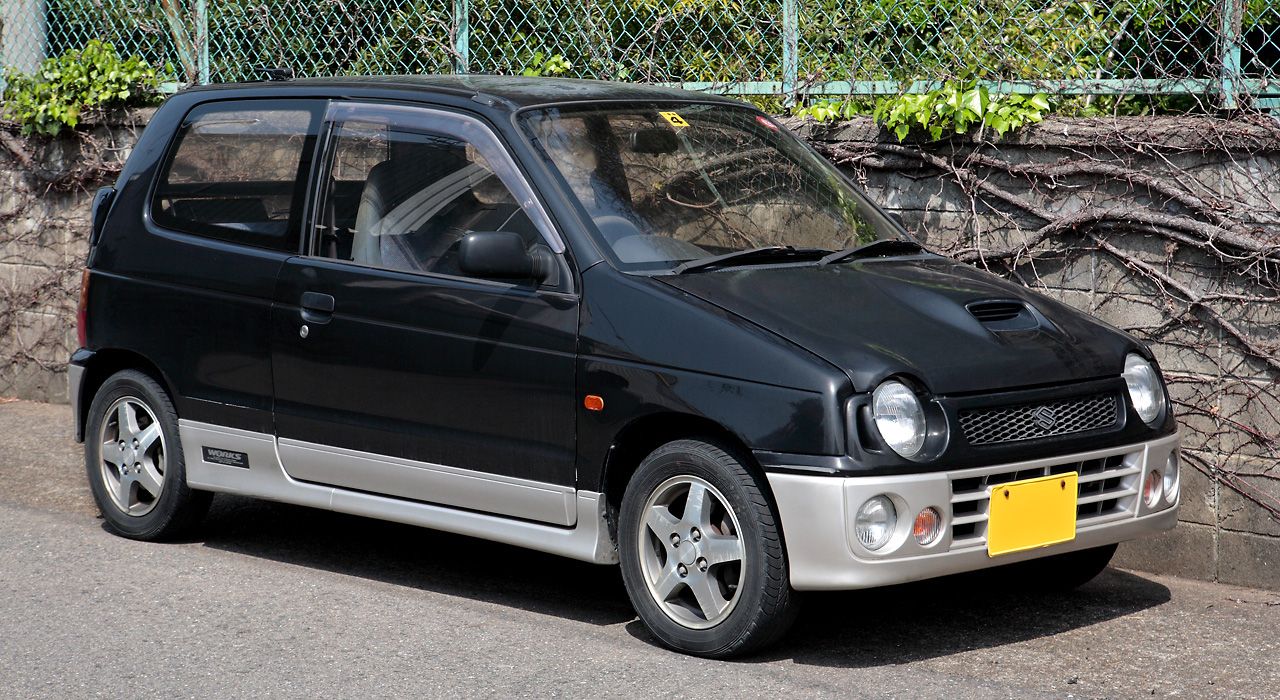
5. **Mitsubishi Alto Works**Japan’s “kei car” class is famous for its tiny automobiles, specifically designed to take advantage of the country’s generous tax regulations, where the smallest cars benefit from significant tax breaks. In recent years, these adorable and surprisingly capable little cars have even found their way into the U.S., with models like the Honda Beat, Suzuki Cappuccino, and Autozam AZ-1 emerging as popular choices among enthusiasts. But there’s another sporty, lesser-known alternative that’s just as cool, perhaps even cooler: the Mitsubishi Alto Works.
Mitsubishi had already achieved commercial success with the regular version of the Alto, a humble yet popular kei car. But they decided to crank things up a notch, aiming to create a much more powerful version that would appeal directly to the burgeoning hot hatch market. The result? The Alto Works, which was immediately lauded as the fastest kei car ever built at the time of its exciting launch. To ensure everyone knew just how fast it was, Mitsubishi went all out, adding a bold body kit, a distinctive scoop on the hood, and aggressive sports decals all over the car.
In its top-spec form, this zippy little machine even came with all-wheel drive, a true rarity for such a small vehicle! Its incredibly light overall curb weight meant it was surprisingly spry and fun to drive, offering a truly spirited experience. The Alto Works line continued for three generations, lasting well into the ’90s, proving its enduring appeal. But if you ask us, the original ’80s generation truly takes the cake for being the funkiest and most groundbreaking of the bunch. It’s a real shame more people don’t remember this mighty little pocket rocket from the Land of the Rising Sun.
Car Model Information: 2024 Genesis GV70 2.5T AWD
Name: Mitsubishi Minica
Caption: Sixth generation Minica
Manufacturer: Mitsubishi Motors
Aka: Mitsubishi 360, Towny
Production: 1962–2011
Assembly: Mitsubishi Motors#Locations,Kurashiki, Okayama
Class: Kei car
Related: Mitsubishi Minicab
Successor: Mitsubishi eK,Mitsubishi i
Categories: 1960s cars, 1970s cars, 1980s cars, 1990s cars, 2000s cars
Summary: The Mitsubishi Minica (Japanese: 三菱・ミニカ, Hepburn: Mitsubishi Minika) is a model series of kei cars, produced by Mitsubishi Motors Corp. (MMC) over five generations, from 1962 to 2011, mainly for the Japanese domestic market.
The Minica was first built by Shin Mitsubishi Heavy-Industries, one of Mitsubishi Heavy Industries’ three regional automotive companies, until they were merged in 1964. As such, the badge predates M.M.C. itself. In Japan, it was sold at a specific retail chain called Galant Shop.
The Minica range was replaced by the Mitsubishi eK and the Mitsubishi i in 2007 and 2011, respectively.
Get more information about: Mitsubishi Minica
Buying a high-performing used car >>>
Brand: Mitsubishi Model: Alto Works
Price: $39,995 Mileage: 20,074 mi.
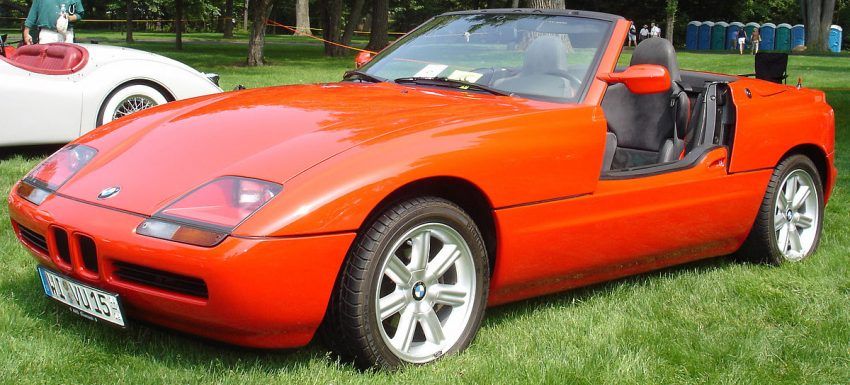
6. **BMW Z1**Back in the mid-’80s, BMW decided to shake things up in a major way and establish a dedicated “skunkworks” division. The brilliant idea behind this initiative? To create radical new concepts, completely free from the usual corporate bureaucracy and red tape that often stifles true innovation at a major car manufacturer. This special division was aptly named BMW Technik, and their very first groundbreaking product was a sports car unlike anything else on the market: the truly unique BMW Z1.
Initially, the Z1 was conceived purely as a design study, a way to explore bold new ideas without the immediate pressure of mass production. But when company bosses laid eyes on the stunning concept, they were so utterly smitten that they immediately approved a limited production run. In total, 8,000 units of this distinctive car would eventually be built, making it a rare sight from its very inception. What truly made the Z1 stand out from the crowd? It was packed with unique design features that turned heads and sparked conversations.
Perhaps its most famous and certainly most innovative feature was its incredibly cool sliding doors that lowered vertically into the sills rather than opening outwards – talk about a showstopper that still impresses today! It also boasted revolutionary plastic body panels that could be removed and even swapped out, allowing owners to change the car’s color whenever they felt like a fresh new look. The Z1’s success directly encouraged BMW to delve deeper into the idea of a more mass-market roadster, which eventually led to the hugely popular Z3. However, with its low production numbers and rather cult classic status, the Z1 has, sadly, been gradually forgotten about over time, despite being arguably one of the most unique and pioneering BMWs to ever roll off the production line.
Read more about: The Unstoppable Rise: 13 ’90s Icons That Are Now Automotive Goldmines – A Deep Dive into Their Explosive Value
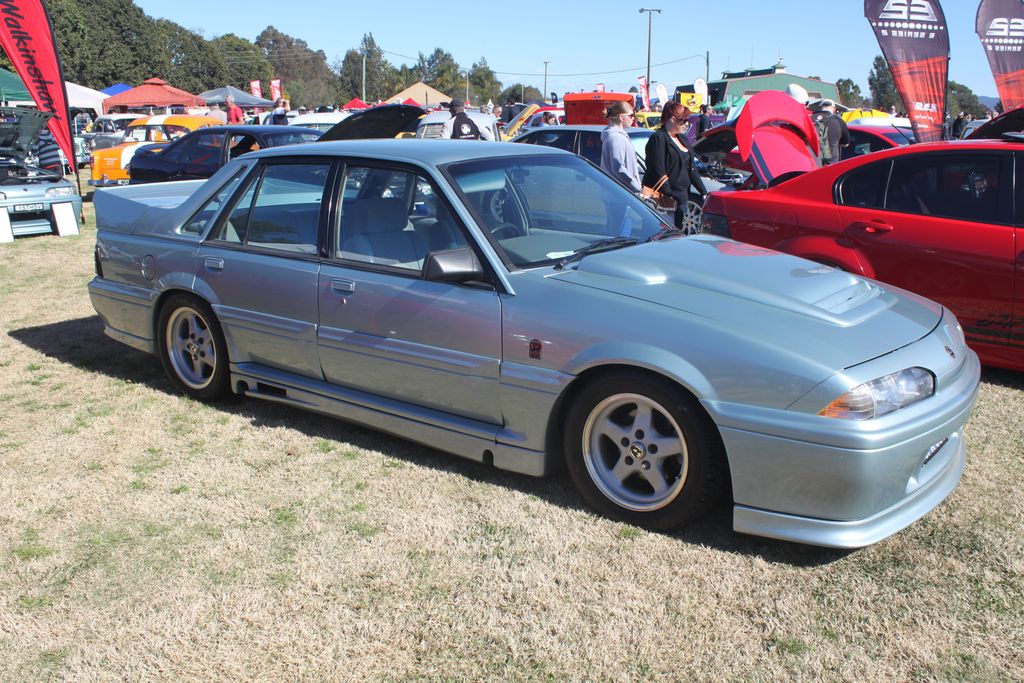
7. **HSV Commodore SS Group A SV**Here’s a car that’s an absolute icon in its native Australia, yet largely remains a fascinating mystery to the rest of the world: the HSV Commodore SS Group A SV, affectionately known Down Under as the “Walky.” This beastly machine was originally conceived as a “homologation special” – meaning it was built in strictly limited numbers to allow HSV (Holden Special Vehicles) to race in the highly competitive Group A motorsport category.
The initial plan was to build just 500 units of this formidable four-door sedan, which sported a mighty 5.0L V8 engine and a truly wild aero kit that commanded attention. But demand for this monster was so incredibly strong and immediate that HSV ended up producing a total of 750 examples, a testament to its raw appeal! Its development could best be described as a pure “race-first” approach; like many other homologation cars of the era, it was initially built in its uncompromising competition form, and then adapted just enough to meet the minimum requirements for road use.
Despite its hardcore racing pedigree, it still featured everyday niceties like power steering and air conditioning, making it surprisingly usable on the road, unlike some other more extreme homologation specials of its era. The “Walky” never raced outside of Australia, and its domestic competition results were a bit mixed, which perhaps contributed to its obscurity abroad. Because of this, it has remained largely under the radar for most enthusiasts outside of Australia, even though it’s a deeply revered and celebrated classic Down Under. It’s high time this formidable Aussie legend got the global recognition it truly deserves!
Alright, so we’ve already taken a wild ride through some seriously cool, yet tragically overlooked, ’80s automotive oddities. From a souped-up Trans Am to a fire-breathing Porsche racer and even a BMW with disappearing doors, it’s clear the decade was bursting with innovation that didn’t always get its moment in the sun. But guess what? The memory lane adventure isn’t over yet! There’s a whole other batch of incredible, forgotten cars from the ’80s that absolutely deserve your attention.
These next seven gems span a surprising range, from ultra-rare supercars and revolutionary concepts to trailblazing luxury SUVs and even some everyday rides that quietly slipped into the shadows. They all have unique stories, groundbreaking features, or just that special ’80s charm that somehow got lost in the shuffle. So, buckle up again, because we’re about to give these unsung heroes their long-overdue comeback tour!
Car Model Information: 2024 Genesis GV70 2.5T AWD
Name: Holden Commodore (VL)
Caption: 1986 Holden Commodore (VL) Executive sedan
Manufacturer: Holden
Aka: Holden Calais (VL)
Production: February 1986–August 1988
Assembly: Adelaide, South Australia
Class: Mid-size car
BodyStyle: sedan (car)
Platform: GM V platform (RWD)
Related: Opel Rekord Series E,Opel Senator
Layout: Front-engine, rear-wheel-drive layout
Engine: Nissan RB engine#RB20,Nissan RB engine#RB30,3.0 L RB30ET I6 (Australia),Holden V8 engine
Transmission: manual transmission
Wheelbase: 2668 mm
Abbr: on
Length: 4766 mm
Width: 1722 mm
Height: convert
Weight: convert
Predecessor: Holden Commodore (VK)
Successor: Holden Commodore (VN)
Categories: All Wikipedia articles written in Australian English, All articles with unsourced statements, Articles with short description, Articles with unsourced statements from October 2015, Articles with unsourced statements from October 2020
Summary: The Holden Commodore (VL) is a mid-size car that was produced by Holden from 1986 to 1988. It was the final iteration of the first generation of the Holden Commodore and included the luxury variant, Holden Calais (VL). Between February 1986 and August 1988, 151,801 VL model Commodores were built.
Get more information about: Holden Commodore (VL)
Buying a high-performing used car >>>
Brand: HSV Model: Commodore SS Group A SV
Price: $39,995 Mileage: 20,074 mi.
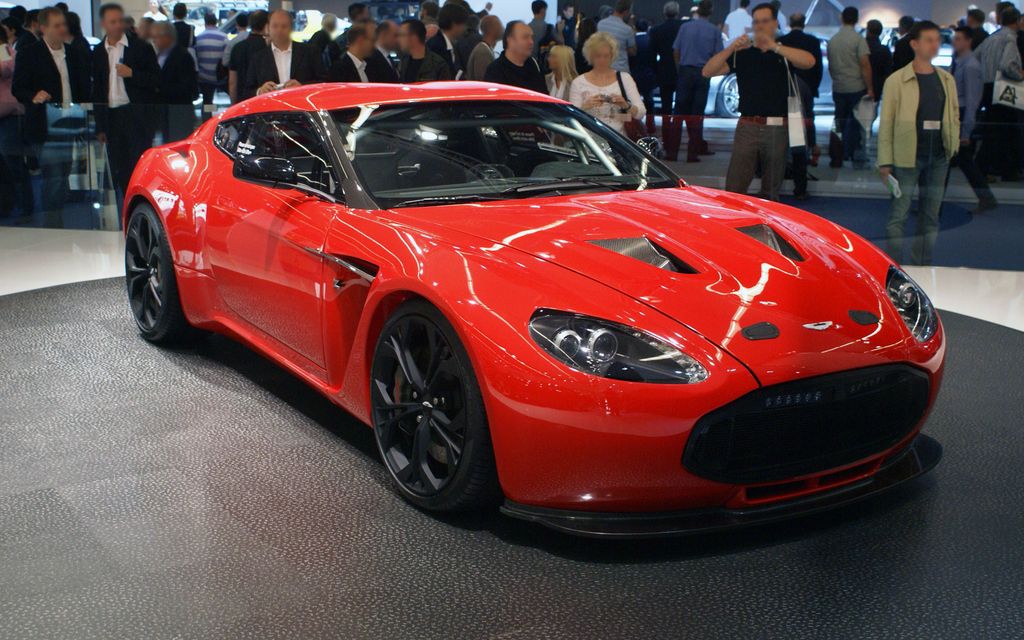
8. **Aston Martin Vantage Zagato**You know Aston Martin, right? Synonymous with suave spies and timeless elegance. And Zagato? Those Italian design wizards known for crafting some seriously stunning car bodies. They’d been partners since the ’50s, but in the early ’80s, Aston gave Zagato their ultimate challenge: take the already mighty V8 Vantage and make it a contender against the era’s titans, the Porsche 959 and Ferrari 288 GTO. The result was a car that wasn’t exactly a beauty queen compared to its rivals, but boy, was it fast!
Zagato’s makeover was intense. They actually shrunk the car’s wheelbase, totally revised its bodywork, and shaved off about 10% of its weight. Fifty units were planned, and before the car even officially debuted at the 1986 Geneva Motor Show, every single one was snapped up! While it didn’t chase a production car speed record like its competitors, an early prototype still hit an impressive 185.52 mph. So, why did this speed demon end up largely forgotten while the 288 GTO became a legend? Perhaps it was that slightly divisive styling, or maybe just the sheer dominance of its rivals. It’s a genuine head-scratcher why such a rapid machine from its time is now only marginally more valuable than a standard Vantage. Talk about criminally under-appreciated!
Car Model Information: 2024 Genesis GV70 2.5T AWD
Name: Aston Martin V8 Vantage,Aston Martin V12 Vantage
Caption: V12 Vantage S
Manufacturer: Aston Martin
Production: 2005–2017 (V8 Vantage),2009–2018 (V12 Vantage)
Assembly: Gaydon, Warwickshire
ModelYears: 2006–2018
Designer: Ian Callum,Henrik Fisker
Class: Sports car
BodyStyle: coupé
Platform: Aston Martin VH platform
Related: Aston Martin DB9,Aston Martin DBS V12,Aston Martin V12 Zagato,Aston Martin Rapide,Aston Martin DB10,Aston Martin Vanquish (2012)
Layout: Front mid-engine, rear-wheel-drive layout
Engine: ubl
Transmission: Graziano Trasmissioni,manual transmission
Wheelbase: 102.4 in
Abbr: on (V8 Vantage)
Length: 172.5 in
Width: 73.5 in
Height: 49.4 in
Weight: 1630 kg
Sp: uk
Predecessor: Aston Martin Virage#Vantage
Successor: Aston Martin Vantage (2018)
Doors: Swan doors
Categories: 2010s cars, 24 Hours of Le Mans race cars, All articles with unsourced statements, Articles with short description, Articles with unsourced statements from April 2023
Summary: The Aston Martin Vantage is a series of hand-built sports cars from the British automotive manufacturer Aston Martin. Aston Martin has previously used the “Vantage” name on high-performance variants of their existing GT models, notably on the Virage-based car of the 1990s. The modern car, in contrast, is the leanest and most agile car in Aston’s lineup. As such, it is intended as a more focused model to reach out to potential buyers of cars such as the Porsche 911 as well as the exotic sports and GT cars with which Aston Martins traditionally compete.
Production of the V8 Vantage ended in 2017 while production of the V12 Vantage continued until 2018. The 2005 Vantage and its variants became the most successful model in Aston Martin’s history. Aston Martin unveiled the next-generation Vantage in November 2017, and started its production run the following year.
Get more information about: Aston Martin Vantage (2005)
Buying a high-performing used car >>>
Brand: Aston Martin Model: Vantage Zagato
Price: $39,995 Mileage: 20,074 mi.
Read more about: Unearthing the Gems: 14 Rare Cars of the 1970s That Defined an Era of Power and Panache
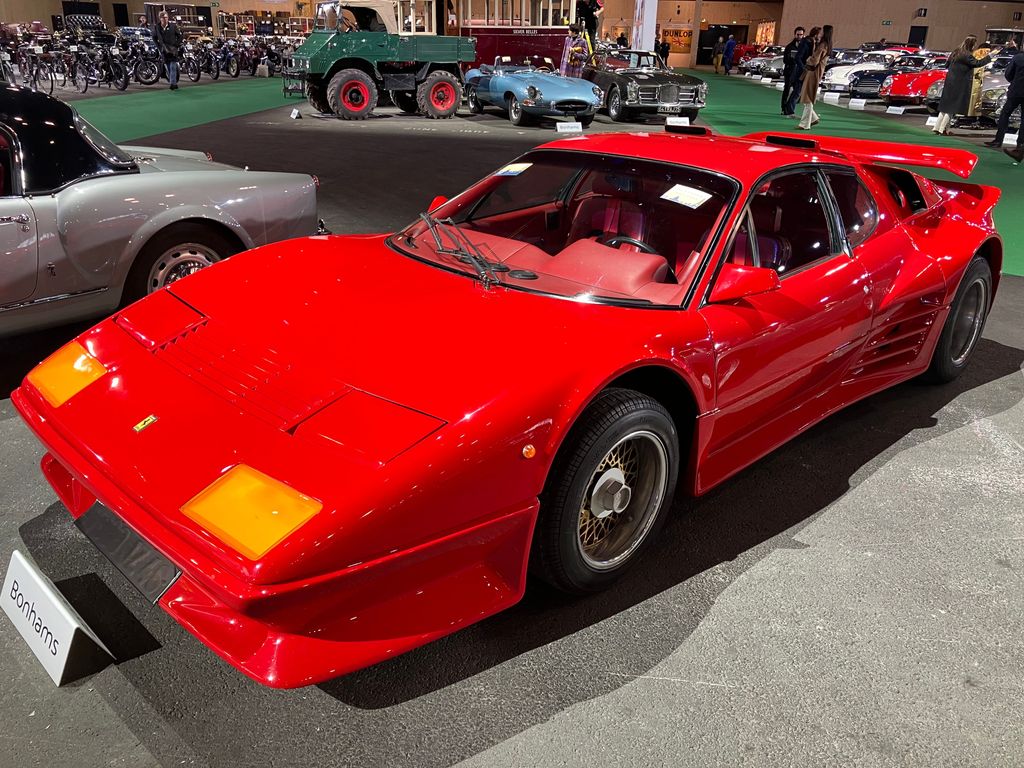
9. **Ferrari Testarossa Koenig Special**If you thought today’s custom car scene was wild, you haven’t seen anything until you’ve looked back at the 1980s. This was the absolute peak of outlandish supercar tuning, a time when super-rich owners were ready to shell out eye-watering sums just to have the most ridiculously powerful or visually over-the-top ride on the block. And at the very top of that extreme pyramid sat the Koenig Ferrari Testarossa. This wasn’t just a car; it was a statement, a shout, a whole concert of automotive excess!
Willy Koenig’s special creations took the already iconic Testarossa and pushed it into the stratosphere. We’re talking up to an insane 1,000 horsepower, thanks to the magic of twin turbochargers! The bodywork even got a radical redesign to make it look more like the fearsome F40, and customers could customize every inch to be lighter, more luxurious, or even both. This was the ultimate symbol of ’80s modification culture, the absolute crème de la crème. But as quickly as this trend soared, it crashed back down to earth. By the ’90s, these wild creations were seen as laughably dated, and Ferrari purists would just scoff. Yet, in a quirky twist of fate, these incredible Koenig Specials have seen a slight resurgence in popularity lately. It just goes to show you that everything old eventually becomes cool again, right?
Car Model Information: 1986 Ferrari Testarossa
Name: Ferrari Testarossa, 512 TR and F512 M
Manufacturer: Ferrari
Production: 1984–1996,9,939 produced
Assembly: Maranello
Predecessor: Ferrari Berlinetta Boxer
Class: Sports car,Grand tourer
BodyStyle: berlinetta
Layout: Rear mid-engine, rear-wheel-drive layout
Engine: Ferrari flat-12 engine,Flat-12 engine
Transmission: Manual transmission
Designer: Leonardo Fioravanti (engineer)
Categories: 1990s cars, All articles with dead external links, All articles with unsourced statements, Articles containing Latin-language text, Articles with dead external links from February 2018
Summary: The Ferrari Testarossa (Type F110) is a 12-cylinder mid-engine sports car manufactured by Ferrari, which went into production in 1984 as the successor to the Ferrari Berlinetta Boxer. The Pininfarina-designed car was originally produced from 1984 until 1991, with two model revisions following the end of Testarossa production called the 512 TR and F512 M, which were produced from 1992 until 1996. Including revised variations, almost 10,000 cars in total were produced, making it at the time one of the most mass-produced Ferrari models.
The Testarossa is a two-door coupé that premiered at the 1984 Paris Auto Show. All versions of the Testarossa were available with a rear-mounted, five-speed manual transmission. The rear mid-engine design (engine between the axles but behind the cabin) keeps the centre of gravity in the middle of the car, which increases stability and improves the car’s cornering ability, and thus results in a standing weight distribution of 40% front: 60% rear.
The original Testarossa was re-engineered for the 1992 model year and was introduced as the 512 TR (TR meaning TestaRossa), at the Los Angeles Auto Show, effectively as a completely new car, and an improved weight distribution of 41% front, 59% rear. Another new variant called the F512 M was introduced at the 1994 Paris Auto Show. The car dropped the TR initials and added the M which in Italian stood for modificata, or translated to modified, and was the final version of the Testarossa, which continued its predecessor’s weight distribution improvement of 42% front, 58% rear. The F512 M was Ferrari’s last vehicle that featured the flat-12 engine.
The Testarossa is a recognized cultural icon of the 1980s, and was popularized by media including the 1984 television series Miami Vice (from the 1986 season onward) and Sega’s 1986 video game Out Run.
Get more information about: Ferrari Testarossa
Buying a high-performing used car >>>
Brand: Ferrari Model: Testarossa
Price: $129,950 Mileage: 39,847 mi.
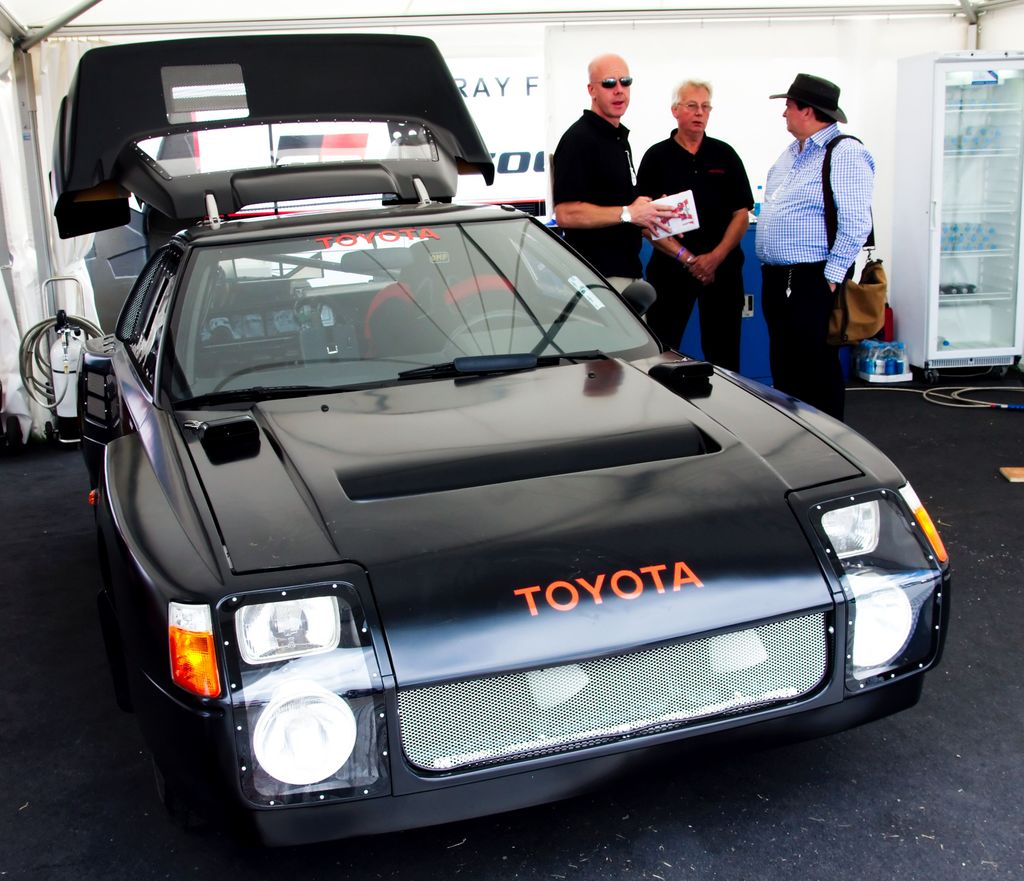
10. **Toyota 222D**When you talk about rally racing legends, Toyota definitely belongs in that conversation, perhaps second only to Lancia. But even the greats have their ‘what if’ moments, and for Toyota, one of the biggest might just be the 222D. This wasn’t just another concept; it was a Group S rally car, engineered to absolutely dominate. The craziest part? It was axed before it ever got to race, a true automotive tragedy!
Toyota, always thinking ahead, decided to get a head start on the competition for the upcoming Group S regulations set to hit the rulebook for the 1987 season. By 1985, their new beast, a heavily modified version of the MR2 with all-wheel drive and a totally unique, race-bred engine, was practically finished. It was ready to rumble! But then, a series of truly heartbreaking fatal accidents involving Group B cars in the 1985 WRC season caused rally bosses to make a drastic, industry-altering decision. They not only banned all Group B cars after 1986 but completely canceled the highly anticipated Group S category too. Suddenly, the less powerful Group A cars were the new top tier. With the 222D so far along in development, there was no way to get it to meet the new Group A rules. And just like that, a groundbreaking rally monster became essentially useless, relegated to the annals of forgotten motorsport history.
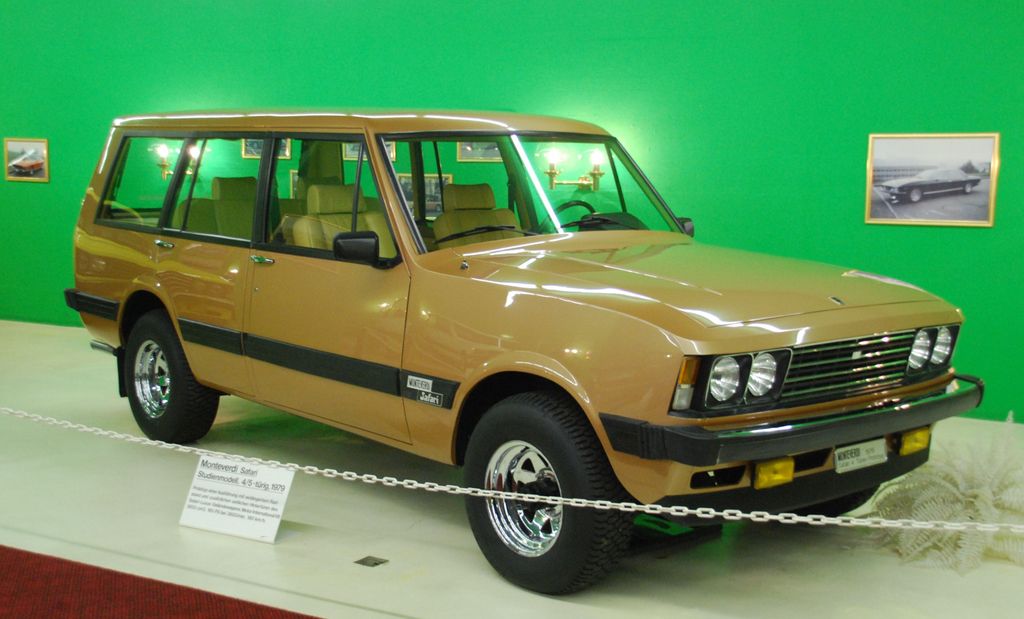
11. **Monteverdi Safari**Okay, prepare for a mind-blower: before luxury SUVs were, well, *everything*, there was the Monteverdi Safari. While it technically debuted in the mid-’70s, its production extended all the way to 1982, making it a legitimate ’80s contender on our list. From a quick glance, you might mistake it for just another boxy SUV, but oh, you’d be so wrong! This thing was a genuine trailblazer, a precursor to the opulent, go-anywhere machines we crave today.
Conceived by the visionary Swiss entrepreneur Peter Monteverdi, the Safari was designed to deliver unprecedented levels of luxury for an SUV. We’re talking an interior draped in the kind of lavish materials you’d expect from the finest Mercedes-Benz models of that era. Sure, the Range Rover had already introduced the idea of a luxury SUV in the early ’70s, but the Safari took things a huge leap forward, offering a level of refinement on the asphalt that the British marque simply couldn’t match. Plus, it came with a much heftier price tag, naturally! The Safari enjoyed reasonable popularity, but sadly, it wasn’t enough to save the company, which declared bankruptcy in 1984. The Monteverdi name was never a household one to begin with, but in the decades since, this pioneering Swiss luxury SUV has been all but totally forgotten by enthusiasts. What a shame for such a forward-thinking ride!
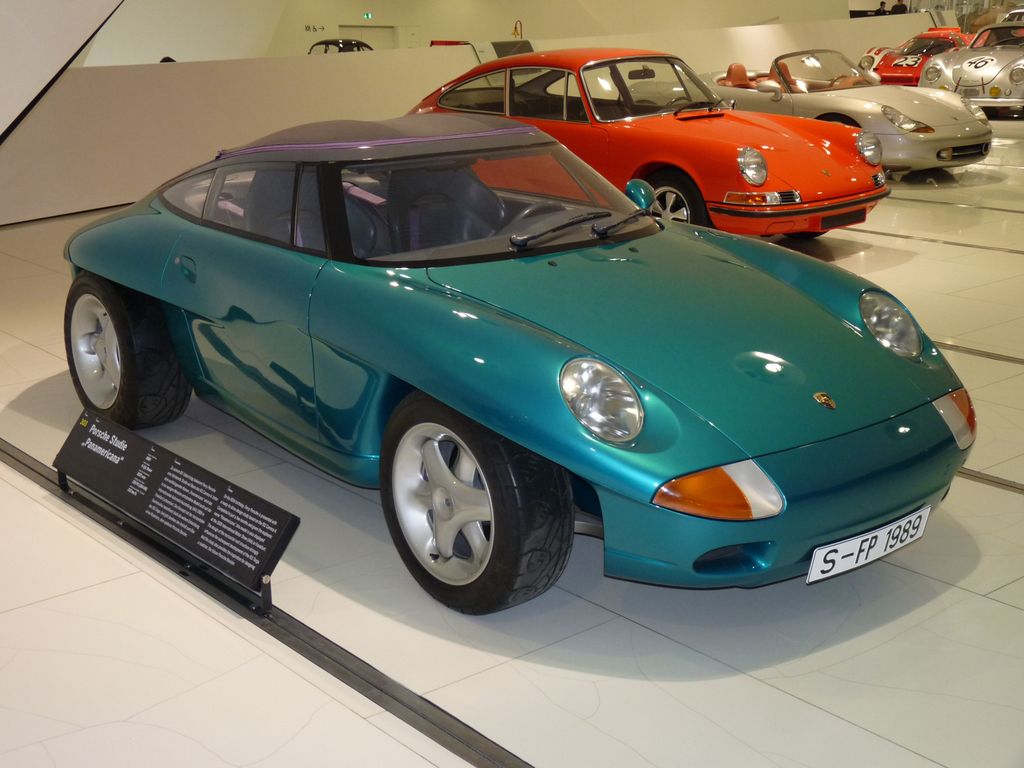
12. **Porsche Panamericana**You might think a concept car is just for show, a pretty face for an auto expo. But sometimes, these design studies hint at something much bigger, something that will shape the cars of tomorrow. That’s exactly the case with the Porsche Panamericana, unveiled at the 1989 Frankfurt Motor Show. It sported a truly head-turning design, taking the classic hallmarks of the iconic 911 and remixing them into something radically different from any Porsche that came before it.
But here’s the cool part: the Panamericana wasn’t just a styling exercise. It was a fully functional, one-off special, built as a very personal 80th birthday present for none other than company chairman Ferdinand ‘Ferry’ Porsche himself! This unique ride packed a punch with its 3.6L six-cylinder engine, churning out a respectable 250 horsepower. And get this: it featured a totally unique soft-top roof that you could actually open with a zipper! It was fully road-legal, registered with German plates, and today, it lives a peaceful life in Porsche’s museum in Stuttgart. Even though it was only ever meant to be a single creation, its sleek lines and innovative spirit clearly influenced several later Porsche production models, most notably inspiring the design of the 911 Targa’s roof and even lending some aesthetic cues to the beloved Boxster.
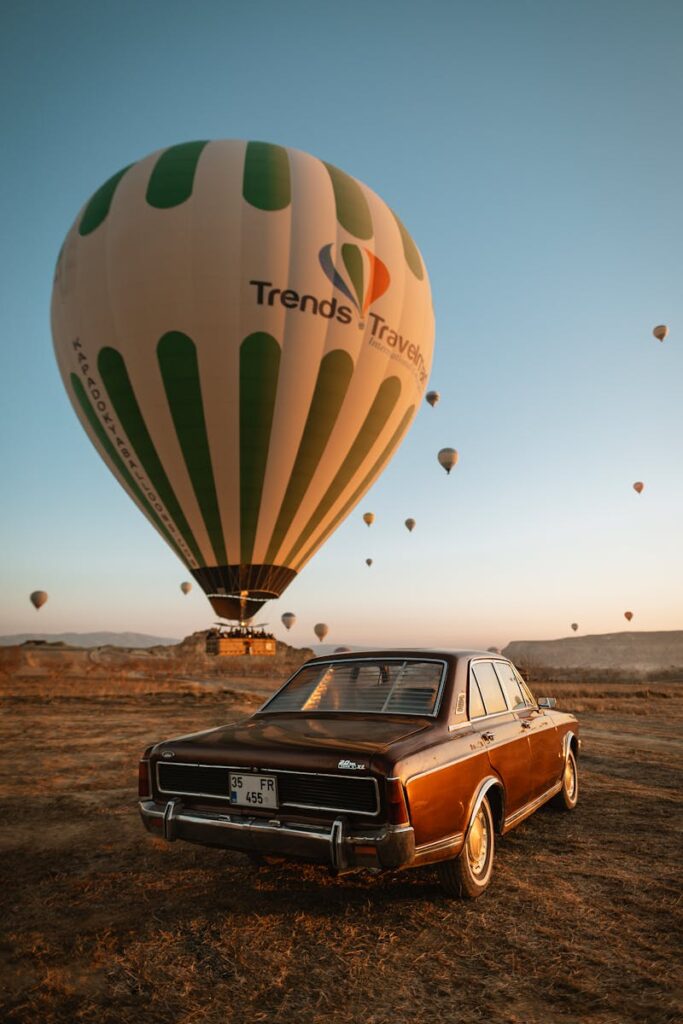
13. **Ford EXP**Ah, the Ford EXP. For those of us who grew up in the ’80s, this car was definitely around, but did anyone actually *remember* it after it left the showroom floor? Despite selling quite well during its initial production run from 1981 to 1985, spotting a first-generation Ford EXP on the roads today is like finding a unicorn. It was Ford’s attempt at a sportier, more image-conscious alternative to the super-popular Escort, though crucially, without any actual power upgrades. So, while it looked a bit zippier, it wasn’t exactly winning any drag races.
The EXP wasn’t fast, that’s for sure, but it was marketed as being a bit more ‘upmarket’ than its budget-oriented Escort stablemate, aiming squarely at buyers who cared more about perceived style than outright performance. Unfortunately, its largely unremarkable nature ultimately sealed its fate, allowing it to fade quietly into obscurity. Few people cherished this car enough to preserve it over the decades, meaning most examples ended up exactly where you’d expect: the scrapheap, after years of dutiful service. While it might not be a collector’s prized possession, the EXP is a fascinating reminder of a car segment that has pretty much vanished with the unstoppable rise of the SUV: the sporty(ish) two-door compact. For that quiet role in automotive history, it definitely deserves more than to simply be forgotten in the archives!
Read more about: Is Your Car a ‘Reliability King’? 15 Vehicles That Last for 200000 Miles or More
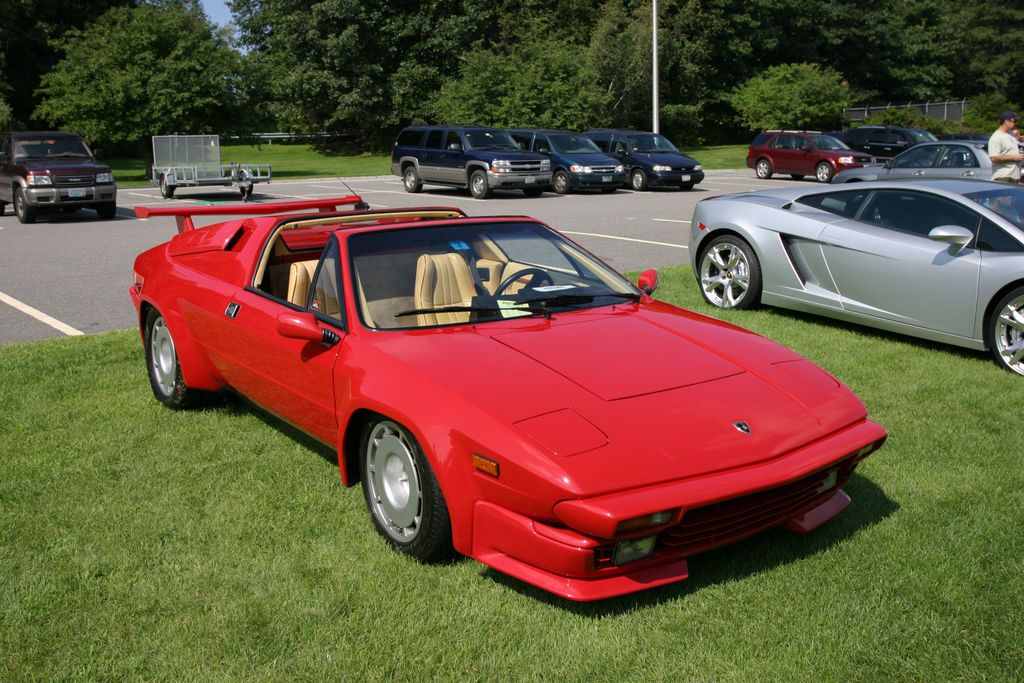
14. **Lamborghini Jalpa**These days, the idea of a ‘sensible’ Lamborghini isn’t so wild—just look at the Urus SUV, which is practically the brand’s best-seller and arguably the most family-friendly car they’ve ever built. But rewind to the ’80s, and Lamborghini was pretty much defined by one car: the Countach, a machine so utterly impractical and bonkers, it was the exact opposite of sensible. So, what did Lambo do to try and expand their lineup in 1980? They unveiled the Jalpa, a car designed to be a bit more ‘toned down,’ an evolution of their earlier Silhouette model.
The Jalpa came equipped with an eight-cylinder engine, a distinct departure from the Countach’s mighty V12, making it a more accessible (and perhaps slightly less terrifying) option. Its Bertone-designed body was sleeker than its predecessor, and the interior was notably more comfortable—a genuine plus for anyone actually planning to, you know, *drive* it. However, despite its relative approachability, the Jalpa only saw limited success. A total of 420 cars were built between 1981 and 1988 before Lamborghini decided to pull the plug on its entry-level model due to lukewarm demand. Today, the Jalpa remains one of the most obscure Lamborghini models, holding the curious distinction of being the last V8-powered Lambo until the introduction of the wildly successful Urus decades later. It’s a true hidden gem in the brand’s storied history!
And there you have it, folks! Our incredible journey through the forgotten automotive treasures of the 1980s comes to a close. We’ve unearthed everything from audacious rally prototypes and experimental supercars to groundbreaking luxury SUVs and surprisingly charming everyday rides that time almost forgot. It’s a testament to the sheer diversity and boundless creativity that defined this unforgettable decade in car design.
While these cars might not grace every ‘best of the ’80s’ list, they each played a unique role in shaping the automotive landscape. They pushed boundaries, sparked innovations, or simply offered a slice of period-perfect charm that resonates with us still. So, the next time you’re cruising around, or just daydreaming about cars, give a little nod to these unsung heroes. They might be obscure, but their stories are anything but! Thanks for joining us on this awesome trip down memory lane. Keep those engines revving, and remember, every car has a story worth telling!


